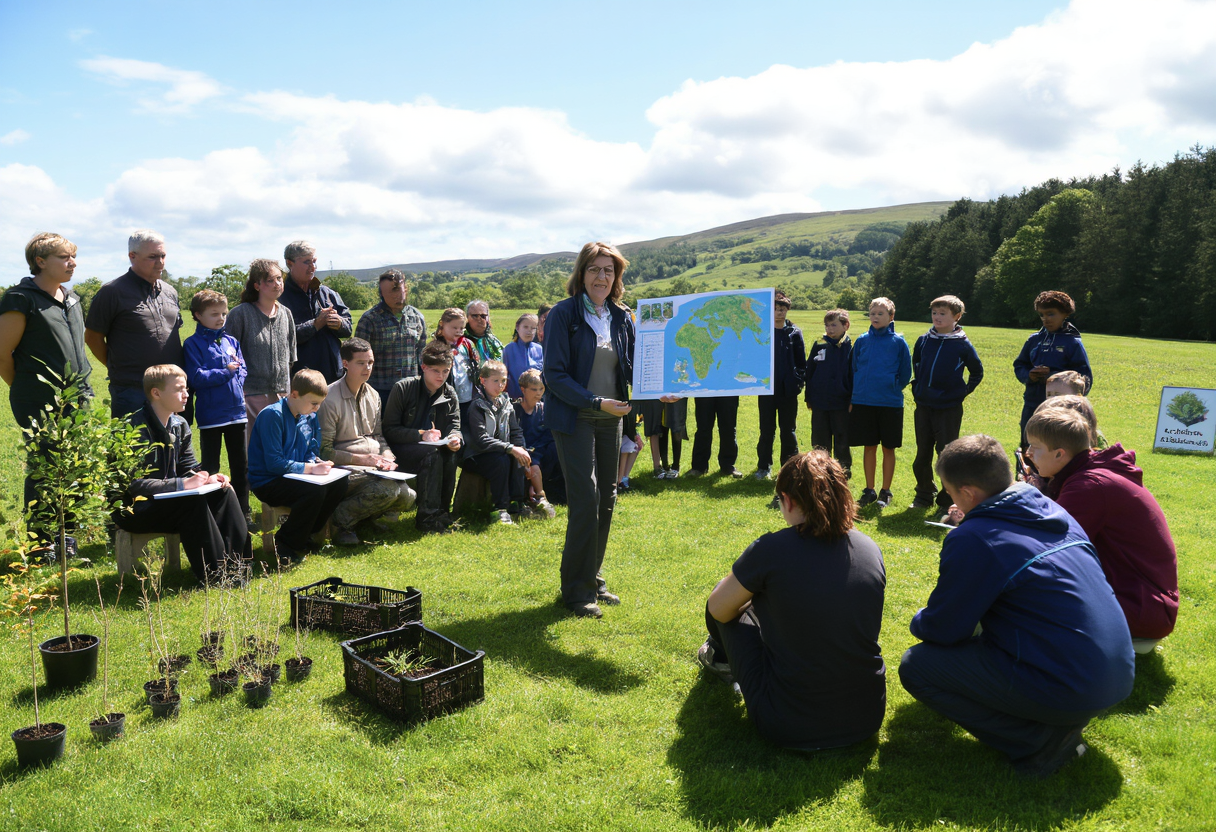Why Environmental Education is Essential for a Sustainable Future
Environmental education is vital for creating a sustainable future. This article investigates its significance, reveals effective methods for implementation, and highlights the need for widespread awareness and action. By leveraging diverse educational approaches, we can inspire individuals and communities to engage in environmentally responsible behaviors, fostering a healthier planet for future generations.
Understanding the Significance of Environmental Education
Environmental education is not merely an academic discipline; it is a comprehensive approach that seeks to transform attitudes and behaviors towards environmental stewardship. In today's world, where environmental degradation is a pressing issue, the importance of environmental education becomes increasingly clear. By instilling a sense of responsibility and awareness, environmental education enables individuals to actively participate in preserving their surroundings. With a focus on sustainability, it teaches citizens the interconnectedness of social, economic, and ecological systems. Furthermore, effective environmental education enhances critical thinking and promotes active citizenship, encouraging individuals to question their behaviors and the policies that govern environmental management. Through this process, environmental education lays the groundwork for societal change, fostering a culture of sustainability that resonates with diverse communities across the globe.
Effective Strategies for Implementation
Implementing impactful environmental education strategies requires thoughtful planning and collaboration among educators, communities, and policymakers. Integrating environmental education into school curriculums allows students to engage with these concepts from an early age. Project-based learning, where students work on real-world environmental issues, fosters collaboration and critical problem-solving skills. Community involvement is another crucial element, as it allows learners to apply their knowledge in practical scenarios. Workshops, seminars, and outdoor learning experiences further enrich the educational process, providing diverse avenues for exploration and engagement. Additionally, leveraging digital tools and social media can amplify the reach of environmental education, engaging young audiences through platforms they use daily. Ultimately, effective implementation strategies must be adaptable and inclusive, ensuring that a wide range of learners have access to transformative environmental education experiences. This adaptability is essential for addressing the diverse needs of communities and fostering sustainable practices.
Promoting Environmental Literacy in Communities
Promoting environmental literacy is fundamental in empowering communities to confront environmental challenges. Environmental education serves as a catalyst for community engagement, encouraging dialogues about sustainability. Workshops and community meetings enable individuals to share perspectives, thereby fostering a sense of belonging and collective action. Furthermore, encouraging local stewardship initiatives, such as clean-up campaigns and tree planting events, bridges the gap between knowledge and action. By engaging with their environment directly, participants develop a deeper appreciation for local ecosystems and biodiversity. Schools, non-profit organizations, and local governments can play critical roles in facilitating these community-driven initiatives. As environmental literacy grows, so too does the capacity for communities to advocate for policy changes that support sustainable development. The ripple effects of promoting environmental literacy can lead to transformative changes at both local and global levels.
The Role of Technology in Environmental Education
In an era increasingly driven by technology, integrating digital tools into environmental education holds great promise. Online platforms and virtual learning environments can vastly expand access to educational resources, breaking down geographical barriers. Interactive apps and educational games make learning about the environment engaging and fun, particularly for younger audiences. Moreover, technology can facilitate data collection and analysis, empowering students to conduct research and contribute to local environmental projects. The rise of social media also provides opportunities for advocacy and awareness-raising, allowing individuals to share their journeys and collectively inspire action. However, it is crucial to ensure that technology is used responsibly; an overreliance on digital platforms can detract from hands-on learning experiences that are essential in environmental education. Ultimately, the role of technology in environmental education should enhance, rather than replace, the foundational principles of experiential learning and community engagement.
Challenges to Effective Environmental Education
While the importance of environmental education is widely acknowledged, several challenges hinder its effectiveness. Inconsistent funding and policy support can create barriers for educators wishing to implement comprehensive programs. Furthermore, the variability of educational standards across regions can result in disparities in access to quality environmental education. Additionally, changing public attitudes towards environmental issues can complicate educational efforts; misinformation can stifle meaningful dialogue and progress. Addressing these challenges requires commitment from various stakeholders, including governments, educational institutions, and communities. Strengthening collaborations and sharing best practices can lead to more robust environmental education programs. It is also necessary to engage with the public to promote accurate information about environmental issues, fostering an informed citizenry committed to sustainability. By confronting these challenges head-on, environmental education can flourish and achieve its goal of fostering environmental stewardship.
Conclusion: A Vision for a Sustainable Future
As we look towards the future, the need for effective environmental education remains more critical than ever. By understanding its significance and embracing innovative strategies for implementation, we can work towards cultivating a culture of sustainability. The role of education in shaping responsible citizens who prioritize environmental stewardship is indispensable. Therefore, it is crucial to advocate for the integration of environmental education across all levels of learning. A multidisciplinary approach, coupled with community involvement and technological advancements, holds the key to unlocking the full potential of environmental education. Together, we can foster a global movement that empowers individuals and communities to take meaningful action in addressing environmental challenges. The vision of a sustainable future is within our reach, and environmental education is the pathway leading us there.
